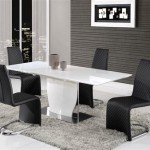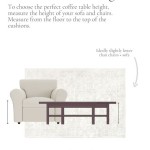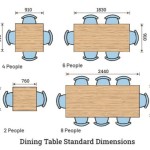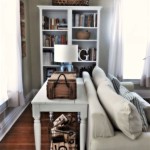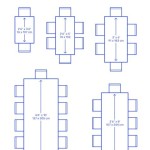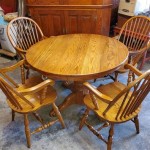Brass and Marble Coffee Tables: A Synthesis of Elegance and Durability
Brass and marble coffee tables represent a sophisticated design choice, blending the warmth of brass with the timeless elegance of marble. These tables serve as focal points in living rooms, offering a surface for drinks, books, and decorative items while simultaneously contributing to the overall aesthetic. The inherent qualities of both materials—brass for its durability and visual appeal, and marble for its luxurious texture and unique veining—make them a desirable addition to various interior design schemes.
The combination of brass and marble in furniture design is not a recent trend. Both materials have been used in architecture and decorative arts for centuries. Brass, an alloy of copper and zinc, has been prized for its workability, corrosion resistance, and attractive golden color. Marble, a metamorphic rock formed from recrystallized carbonate minerals, is admired for its smooth, cool surface, diverse coloration, and distinctive veining patterns. The juxtaposition of these materials creates a visually striking piece of furniture that can complement both modern and traditional interior designs.
The Allure of Brass
Brass offers several advantages in the construction of coffee tables. Its inherent strength allows for the creation of sturdy and durable frames and legs. Brass is also relatively easy to work with, enabling intricate designs and detailed embellishments. The golden hue of brass adds warmth and a touch of luxury to any space, complementing the coolness of marble beautifully. Furthermore, brass is highly resistant to corrosion, ensuring that the table maintains its appearance over time with proper care.
Different finishes can be applied to brass to alter its appearance. Polished brass offers a high-shine, reflective surface that exudes glamour. Brushed brass, on the other hand, has a softer, more subtle sheen, providing a more understated elegance. Antique brass finishes offer a vintage aesthetic, adding character and depth to the design. The choice of finish significantly impacts the overall look and feel of the coffee table, allowing it to be tailored to specific design preferences.
Brass is often used to create the frame and legs of the coffee table, providing structural support and visual interest. The brass frame can be designed in various styles, from minimalist geometric shapes to more ornate and intricate patterns. The legs can be straight, tapered, or curved, depending on the desired aesthetic. The versatility of brass allows designers to create a wide range of coffee table styles, catering to diverse tastes and preferences.
The Timeless Appeal of Marble
Marble is renowned for its luxurious appearance and unique characteristics. No two pieces of marble are exactly alike, as the veining patterns and coloration vary depending on the origin and composition of the stone. This inherent uniqueness adds a touch of exclusivity and sophistication to any coffee table. Marble is also a durable material, resistant to scratches and heat, making it a practical choice for a high-use surface.
The cool, smooth surface of marble provides a tactile contrast to the warmth of brass. This contrast is visually appealing and adds depth to the design. Marble is available in a wide range of colors, from classic white and gray to more vibrant hues such as green, pink, and black. The choice of marble color depends on the overall design scheme and the desired effect. White marble, such as Carrara or Calacatta, is a popular choice for its timeless elegance and versatility. Black marble, such as Nero Marquina, offers a dramatic and sophisticated look. Colored marbles can add a pop of personality and visual interest to the room.
Marble used on a coffee table often undergoes a polishing process to enhance its natural beauty and protect it from stains. Polishing creates a smooth, reflective surface that highlights the veining patterns and coloration of the stone. However, it is important to note that marble is a porous material and can be susceptible to staining if not properly sealed. Regular cleaning and sealing are essential to maintain the beauty and integrity of the marble surface.
Design Considerations for Brass and Marble Coffee Tables
When selecting a brass and marble coffee table, several design considerations should be taken into account. The size and shape of the table should be appropriate for the size and layout of the room. A large, rectangular table may be suitable for a spacious living room, while a smaller, round table may be a better choice for a more compact space. The height of the table should also be considered, ensuring that it is comfortable to use while seated on the sofa or chairs.
The style of the coffee table should complement the overall design aesthetic of the room. A minimalist brass and marble table with clean lines may be a good choice for a modern interior, while a more ornate table with intricate brass detailing may be better suited for a traditional or eclectic space. The color and finish of the brass and marble should also be carefully considered to ensure that they harmonize with the existing decor.
The functionality of the coffee table should also be taken into account. If the table is intended for everyday use, it should be durable and easy to clean. A marble top with a protective sealant is essential for preventing stains and scratches. The brass frame should be sturdy and well-constructed to ensure that the table is stable and long-lasting. If storage is a concern, a coffee table with a lower shelf or drawers may be a practical choice.
The placement of the coffee table is also an important design consideration. The table should be positioned in a way that allows for easy access to the seating area and does not obstruct the flow of traffic. It should also be placed in a location that showcases its beauty and complements the surrounding decor. A brass and marble coffee table can serve as a focal point in the room, drawing the eye and adding visual interest.
The lighting in the room can also impact the appearance of the coffee table. Natural light enhances the beauty of the marble and brass, highlighting the veining patterns and coloration of the stone and the warmth of the metal. Artificial lighting can also be used to create a specific mood or effect. A warm light can enhance the golden hue of the brass, while a cool light can accentuate the cool tones of the marble.
Maintaining a brass and marble coffee table requires regular cleaning and care. The marble surface should be cleaned with a mild soap and water solution and dried with a soft cloth. Harsh chemicals and abrasive cleaners should be avoided, as they can damage the surface. The brass frame should be cleaned with a brass cleaner and polished with a soft cloth to maintain its shine. It is important to follow the manufacturer's instructions for cleaning and care to ensure that the table remains in good condition.
In conclusion, brass and marble coffee tables offer a compelling blend of elegance, durability, and timeless appeal. These tables serve as functional and aesthetic additions to any living space, reflecting a sophisticated taste and appreciation for quality craftsmanship. By carefully considering design elements such as size, style, and finish, one can select a brass and marble coffee table that perfectly complements their interior design and enhances the overall ambiance of their home.

Meyer Cross Xivil 36 In Brass Round Coffee Table With Faux Marble Top Ct0998 The Home

Blog Eh DÉcor

Marble Topped Pedestal Coffee Table Modern Living Room Furniture West Elm

Boca Brass Bamboo White Marble Coffee Table

Mid Century Green Marble And Brass Coffee Table 1960s For Sale At Pamono

Meyer Cross Mitera 36 In Brass And Faux Marble Round Top Coffee Table With 2 Nested Tables Ct1893 The Home

Ta Studio Round Coffee Table Fisher In Marble Theodore Alexander

Excelsior Brushed Brass Ceramic Coffee Table Shop Now

Italian Brass Carrara Marble Coffee Table With Thick Cut Top 1880s For Sale At Pamono

Vintage French Brass And Marble Coffee Table At 1stdibs

